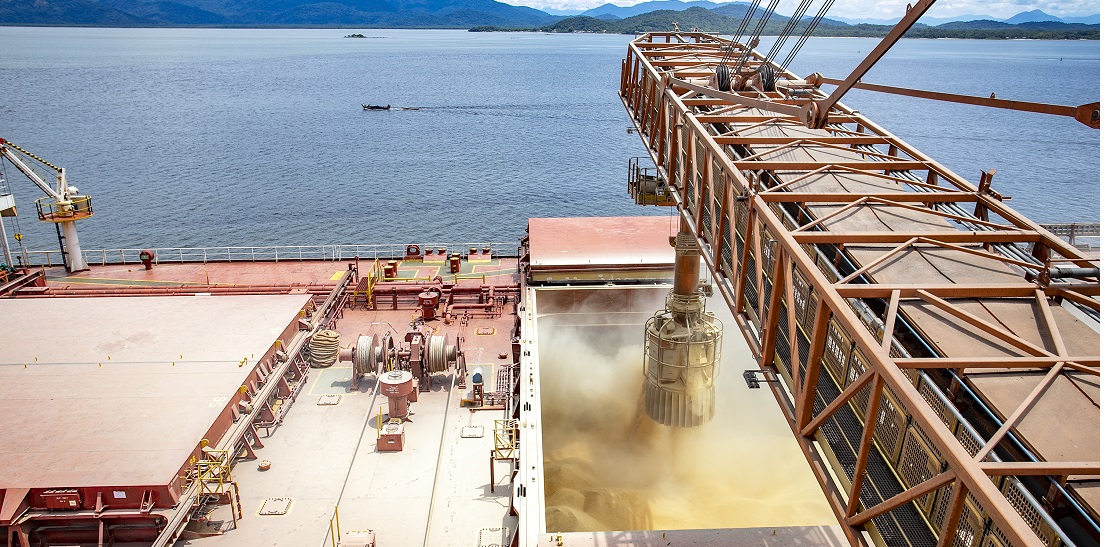
Brazil agriculture sector races to export 3.6 mt of soybeans in advance of next harvest
Oct, 20, 2023 Posted by Gabriel MalheirosWeek 202340
The shortage of warehouses to store nearly half of the 2022/23 harvest and the coming of the new planting season are pressuring agriculture in the state of Paraná to expedite the shipment of millions of tonnes of soybeans to the Port of Paranaguá over the next 90 days to avoid losing the crop. The new rule in the sector is to sell and ship soybeans as quickly as possible.
To make room in the silos and warehouses for the next crop, many farmers and grain dealers have decided to accelerate their sales, especially considering the anticipated price increase hasn’t materialized. The price of a sack of soybeans remains around R$130. The expectation was for a price surge, with a bag reaching nearly R$170, the market value of the product in the same period of 2022.
“Many producers were waiting for a possible price increase that didn’t materialize, at least not at the same pace as in the previous years. They were waiting for the right moment, but they needed the storage for the upcoming harvest in about 90 days when tons of soybeans will be harvested. So, they had no choice but to sell what was in storage,” says market analyst and economist Rui São Pedro.
Across the state, many grain receiving units had to improvise storage or invest in silo bags, yet there’s no more room for expanding storage. “This has been a longstanding issue, and this year, we went to the Ministry of Agriculture to request more funding for building storage facilities, a serious deficiency that needs to be resolved to enhance security in the field,” says Norberto Ortigara, Secretary of Agriculture, Livestock, and Supply in Paraná.
The acceleration in export activity is already visible in the ports of Paraná, particularly in Paranaguá, where over 3.6 million tons of soybeans are expected to be shipped from October to December 2023. “If confirmed, this volume will represent a 203% increase compared to the same period in 2022 when 1.2 million tons of soybeans were exported,” compares Luiz Fernando Garcia, CEO of Ports of Paraná.
Dilvo Grolli, President of Cotriguaçu, a central cooperative that brings together some of Brazil’s largest players in the sector and is headquartered in Cascavel, in western Paraná, notes that only 45% of the soybean production had been sold by August, a volume lower than in the same period the previous year.
According to Grolli, just over a month ago, Paraná’s silos and warehouses still held more than 10 million tons, despite production of 22.5 million tons in the previous crop season. The state’s output was 80% higher than that of the 2021/22 period, when Paraná experienced a historic drought and harvested 12.45 million tons.
“We have a historical storage deficit, amounting to 110 to 120 million tons [in Brazil], and therefore, to make room for new crops, we need to sell. However, much of this storage deficiency is due to our increased production. From 2021 to 2023 alone, we increased production by 70 million tons,” says Grolli.
In 2021, Brazil harvested 251 million tons of grains, and in the 2022/2023 cycle, which ended in mid-year, the total reached 320 million tons. “From January to August 2023, 10.1 million tons of soybeans were exported, 10% more than in the same period the previous year. Currently, soybean movement represents 25% of the overall port activity in Paraná,” he adds.
Paraná is the second-largest soybean producer in Brazil, second only to the state of Mato Grosso, which produced just over 45 million tons in the previous cycle. Across the country, the grain yielded 154.6 million tons, making Brazil the world’s largest soybean producer.
Another market segment is the transportation of soybean meal. “The public company is expected to move 1.4 million tons of the product from October to December, 72% more than in the same period the previous year,” says the CEO of Ports of Paraná.
From a logistics perspective, Luiz Fernando Garcia, CEO of Ports of Paraná, believes that the expanding transportation scenario is influenced by several factors, including the growth of the draught, which is the depth at which loaded ships can remain submerged in the water. “This change has provided more logistical security and attracted larger ships to the state’s coast,” he noted.
See below soy exports from the Port of Paranagua between Jan 2019 and Aug 2023. The data is from DataLiner.
Soy exports from Paranagua Port | Jan 2019 – Aug 2023 | WTMT
Source: DataLiner (click here to request a demo)
The operation of the two Export Corridors, East and West, also contributes to these figures. In the first half of this year, the East Corridor of the Port of Paranaguá recorded the highest cargo movement in half a century.
The great expectation now lies in the construction of the new Moegão, which promises a different dynamic and more efficient cargo reception by trains, thus increasing transportation by the railway mode. Only 15% of what arrives at the Port of Paranaguá is transported by rail. When the new facility starts operating in 2026, rail cargo is expected to represent 50% of the volume.
Source: Gazeta do Povo
To read the original publication, please access: https://www.gazetadopovo.com.br/parana/agro-corre-para-embarcar-milhoes-de-toneladas-de-soja-liberaca-armazens/
-
Other Logistics
Jun, 03, 2019
0
Santos-Guarujá bridge project awaits environmental license to begin works
-
Economy
Mar, 12, 2024
0
Milei government opens up food imports in bid to curb price hikes
-
Other Logistics
Oct, 26, 2022
0
Rail companies VLI, Rumo, Petrocity to build 5 new railroads in Brazil
-
Ports and Terminals
Sep, 06, 2019
0
Terminal handling capacity will double at Antonina Port


